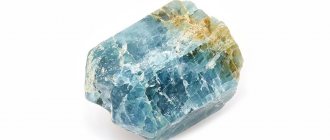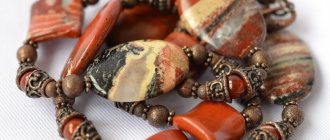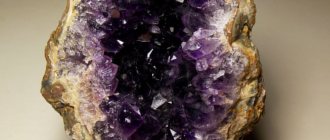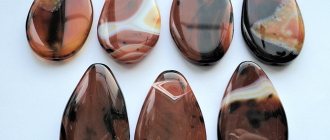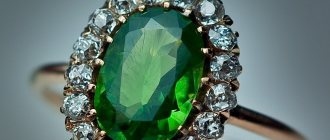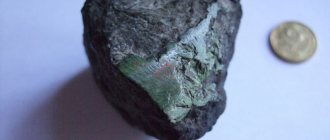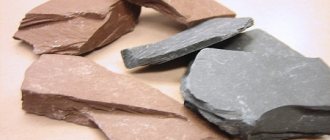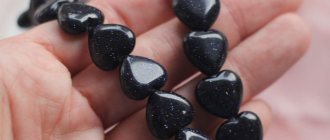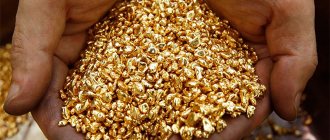Beryl is a stone from the silicate family. Scientists do not have a single point of view as to who first discovered the mineral, but this gem was known already in ancient times almost throughout the world. There are a huge number of types of this crystal; you’ve probably heard their names, but you didn’t even realize that we were talking about beryl. Depending on the specific subtype, it can be a precious, semi-precious, or ordinary crystal.
What stones are we talking about? Well, welcome to the exciting world of crystals. In this article we will talk about the types and properties of beryl stone: physical, chemical and magical.
Story
Beryl is a mineral that began to be mined in the Middle East about 6 thousand years ago, but for a very long time its varieties were considered different stones.
For example, the ancient Egyptians and Greeks took green beryl for chrysolite, and colorless beryl for quartz. Products made from this gem were discovered in the tombs of Egyptian pharaohs. Some historians suggest that yellow beryl and other varieties of the mineral were mined in the mines of Queen Cleopatra, but whether this is true is unknown.
In ancient times, this stone was also known to the Indians. Its name is associated with the city of Belur, located in South India.
The name of the mineral, changing slightly, passed into many languages. In Greek and Latin it took the form beryllus and was later shortened to brill. From it comes the Italian word brillare (“to shine”), which in turn became the source for the French brille.
The word “diamond” has the same root as “beryl” - “brilliant, to shine.”
Nowadays in jewelry beryl refers to transparent crystals of yellow or golden color that have a certain chemical composition.
Noble beryl is a precious stone. Some varieties of beryl cost almost as much as diamonds.
There is also a base type of beryl - this is the raw material for producing the expensive metal beryllium.
Description and external signs
Beryl is a relatively rare mineral of the silicate group. Found in igneous and metamorphic rocks in many parts of the world. Until 1969, the mineral was the only source of beryllium metal. However, already in the 70s of the twentieth century, it began to be obtained by purifying bertrandite, a beryl silicate hydroxide, which is mined at Mount Spor in Utah. A small amount of metal is extracted from waste to produce precious gems.
It is believed that the mineral got its name from the Greek word berullos, which means crystal. From Italian and Sanskrit, the word “beryl” is translated as “light green semi-precious stone” and “blue-green from the sea.”
Physicochemical characteristics
Minerals of the beryllium group have a complex composition.
- Chemical formula: Al2[ Be3( Si6O18 )] .
- Impurities (manganese, chromium, iron and other metals) provide the color: yellow, green, blue, red. If there are no impurities, the color is white.
- The hardness of the stone is high - 7.5–8 units on the Mohs scale . In this indicator, it is second only to diamond and corundum.
- The shine is glassy.
- Transparency is characteristic of noble beryl. Ordinary (used in industry to obtain beryllium) is opaque, its color is grayish or white.
The mineral beryl is resistant to caustic acids and alkalis. It melts at very high temperatures.
STRUCTURE
Crystal structure of beryl. Two large purple atoms are beryllium, three small purple atoms are aluminum, beige are silicon, red are oxygen atoms
The system is hexagonal; dihexagonal-dipyramidal type of symmetry L6 6L2 7PC. The crystal structure is of exceptional interest.
In the crystal structure of beryl, octahedral [Si6O18] rings are located on top of each other, forming hollow channels. The rings are interconnected by beryllium and aluminum atoms, and the channels can accommodate non-structural impurities in the form of alkali metal anions and water molecules.
Be are located between ring radicals, but not on the same level with them, but between layers of rings. Thus, the crystal lattice as a whole is connected by both lateral and vertical bonds. Al ions are in a sixfold environment, and Be ions are in a fourfold environment of oxygen ions. Be2+ ions closely bind ring radicals into a common strong skeleton. It is characteristic that in each unit the rings of radicals located one below the other have a large free channel inside. Large ions such as Na1+, K1+ and Cs1+, as well as H2O, sometimes present in beryl, are located precisely in these channels.
Place of Birth
Ordinary (industrial) beryl is mined in Germany, Sweden, France, Ukraine and other countries.
There are deposits of noble beryl in India, Colombia, Brazil, Namibia, Mozambique, Madagascar, etc. Russia is rich in deposits of this gem. It is mined on the Kola Peninsula, in the Urals (in the Chelyabinsk region). The Shaitanka and Murzinka deposits are almost exhausted.
The mineral is found in the form of druses or individual crystals, sometimes very large.
In 1983, a huge monolith of beryl was found in Brazil; it weighed 32 kg .
This single crystal contained inclusions of aquamarine.
Location in nature
The mineral is mined on all continents, but the largest deposits are in Brazil, Madagascar, and Russia . The crystal is prismatic, columnar in shape. There are single representatives or communities of stones - druses. The deposits are veins ranging in length from several meters to kilometers.
The mineral is formed in igneous rock, it is a product of late volcanic processes.
By this time, the main crystallization of the rock had already passed and crystals from the residual magmatic solution-melt, saturated with gases and rare elements, began to form in the cracks.
Varieties of beryl
Beryl without impurities is colorless. They are the reason for the wide variety of colors and shades of this mineral. Many stones that are varieties of beryl have received their own names. The most famous:
- Emerald is green beryl, a gemstone of the highest level (I order). It is equal in class to diamond, ruby, and blue sapphire. The deep green color can range from grassy to lime green. The cost depends on the brightness - the stronger it is, the more expensive the gem.
- Aquamarine is a second order gemstone. Transparent, blue or greenish-blue. Its color is compared to the color of the sea.
- Noble beryl is also a second order gemstone. Yellowish, light green. The coloring is weak. It may also be colorless.
- Sparrowite (morganite) - usually pink, sometimes reddish, violet-pink, amber.
- Heliodor (Davidsonite) - golden, orange-yellow.
- Bixbit - "red emerald". Very rare.
- Augustite (maxis) . Rare dark blue.
- Bazzite is a light blue mineral.
- Goshenite is colorless and transparent.
The rarest are red and pink beryls. For example, bixbite is found in only one place on Earth, located in the United States. Now its mining has ceased, and “red emeralds” are stored in museums or private collections.
Classification
Emerald
Emerald is a precious variety of mineral that is distinguished by its green color. To be considered an “emerald” it must have a rich, distinct color of bluish-green, green or yellow-green. If the color is not saturated, the subspecies belongs to the “green beryl” group.
There is controversy over the clear distinction between emeralds and green beryls. There is also controversy over the inclusion of minerals that cause the green color - for example, only those stones that get their color from chromium (Cr) rather than vanadium (V) are considered to be emeralds. The metal-colored subspecies is usually too light to be considered an emerald.
Emerald belongs to the “big three” colored stones (along with sapphire and ruby).
Emerald often has an uneven structure, which is why most of the representatives of the subspecies on the market are processed. Cracks are filled with glass or stabilizing resins, which make irregularities less noticeable. They are polished to hide kinks. They are then heated and polished to hide traces of foreign elements in the stone.
However, after these procedures, even novice jewelry lovers will be able to distinguish real pieces from artificial ones. The latter are bright green and transparent, while natural ones are usually translucent and have visible inclusions of foreign elements and fractures.
Aquamarine
Aquamarine is the second most popular gem crystal obtained from beryl. Like emerald, this subspecies is distinguished by its color. It has a distinct greenish-blue or blue color. At the same time, unlike emerald, even weakly colored stones are called “aquamarine”. Deeply colored specimens are more popular, while slightly blue ones are used to make inexpensive jewelry. In addition, unlike emerald, aquamarine has much less impurities of foreign elements and cracks.
The color of the stone can be improved by heating, so almost all specimens sold for sale are heat treated (many blue gems on display were likely blue-green or even yellow before use).
Morganite
Morganite is known as pink beryl or sparrowite. It is a rare subspecies of the mineral. The color of specimens varies from yellowish-orange, orange, pink and lilac. “Rose”, “salmon” and “peach” are words that are often used to describe the color of stones. The color is thought to be influenced by the amount of manganese (Mn), which gives it a pink hue.
Morganite is the third most common subspecies. Usually its selection in stores is limited, since fully painted specimens (especially in the top layer) are not common. Like its cousins, morganite is heat treated to improve its color qualities.
There are artificially made specimens, but they, like natural ones, are not popular. This is due to several factors:
- light color of most gems;
- there is no constant source of production;
- lack of awareness about the stone among consumers.
Heliodor
Yellow crystal is a durable stone with a beautiful color and low price. It received its unusual name from the Greek language, meaning “gift of the sun.” As with morganite, the stone is little known and therefore not popular. It is known as “yellow emerald,” but trade commissions are proposing to reconsider the use of the generic name.
A large deposit of the gem was discovered on the territory of modern Germany in 1915. The then famous jeweler Lucas von Cranach was asked to create a jewelry set for the Emperor and King of Prussia, Kaiser Wilhelm II.
Green beryl
Under this name, specimens are known whose color tone is less saturated and pronounced than emeralds. The price difference with the latter is significant, but jewelry with pale green crystals is rarely found on sale.
Red beryl
The red specimen is one of the rarest gems in the world. Deposits that can be further used for cutting have been found in very small quantities in the Wah Wah Mountains and Thomas Range in Utah. Some small specimens occur in the Black Ridge of New Mexico, but their size (a few mm in length) is too small to handle.
It has a deep and rich red color. Precious gems larger than 1 carat are rare and sell for thousands of dollars per carat. It has characteristics similar to emerald - a large number of impurities and cracks.
The gem was originally named bixbit in honor of its discoverer, Maynard Bixby. However, the name did not take root, as it caused confusion with the manganese mineral bixbite, which was also named after Mr. Bixby.
Goshenite
Goshenite is the name used to designate the colorless subspecies. In most cases, the name of a mineral is due to metal impurities in its composition, which give it color.
Occurs in nature in the form of large hexagonal crystals with exceptional clarity and transparency. During the Middle Ages, the stones were processed, polished and inserted into hand-held magnifying glasses, telescopes and the first prototypes of modern glasses. The high hardness of the gem made it one of the most famous minerals in antiquity that was resistant to physical damage.
Goshenite is rarely used for jewelry as its appearance is inferior to other colorless examples on the market (such as diamonds and white sapphires).
Mashish
Another rare representative of dark blue color. Formed in the soil under the influence of natural radiation. An unsuccessful specimen, since in natural light it loses its dark blue color, turning into a pale brown or yellow gem. First found in a mine in the Mias Gerais region of Brazil in 1917.
Iridescent beryl
Aquamarine, golden beryl and emerald are stones that tend to shimmer. When cut correctly, the gems have a cat's eye appearance.
Pezzottati
The newest variety of the mineral was found in 2003. Thanks to the lithium in the composition, it has a crimson-red color.
Fake diamond
In the 20th century, there were several attempts to create artificial beryl, but the synthetic crystals were not identical to the natural gem. In 1960, the Austrians managed to make a fairly successful imitation, which was a mixture of natural colorless beryl with synthetic emerald.
While artificial stones from this group differ from natural ones either in chemical composition or in physical properties. But experiments to create them continue.
Extraction method
Primary stone deposits are hidden by granite pegmatites, quartz veins, and hydrothermal springs.
Along the way, feldspars and other gems (topazes, rock crystal, rauchtopaz) are mined with them.
Rauchtopaz smoky
Deposits of beryllium and other gems of this group are sought using beryllometry.
We recommend: EMERALD gemstone
This is a method developed by scientists in the USSR in the mid-twentieth century. Based on the reaction of beryllium isotopes.
Application
All varieties of beryl are used in jewelry. In jewelry made of precious metals they are used in the form of inserts. The choice of metal for the frame depends on the gem, for example, aquamarine is set in silver, and emerald looks good in gold.
Jewelers adhere to the rule: the higher the cost of the gem, the more expensive the setting.
The most popular is emerald; a variety of jewelry is made with it.
Golden beryl is used for inlaying luxury items: church utensils, expensive wall decorations and others. Large crystals are used to make figurines, and chess pieces are also cut out of them.
Decorations
Pure beryl is used to make jewelry framed with precious metals: earrings, rings, pendants, brooches.
Translucent minerals do not need to be accompanied; they demonstrate the pattern in beads and bracelets. To experience the magical, healing properties of stones, they should be worn as close as possible to the place of illness.
Medicinal properties
Here and in the next three sections of the article, we talk only about noble beryl, a fairly common type of mineral.
The healing and magical properties of all types of beryl are different, therefore, in the field of astrology, magic, and lithotherapy, each subspecies is considered as an independent stone. They all have their own characteristics and meaning for humans.
Healing abilities of golden-green stone:
- Positively affects the heart, lungs and organs located in the upper abdominal cavity.
- Improves metabolism.
- Helps with colds, bronchitis, pneumonia.
- Normalizes blood pressure.
- Soothes pain in the thoracic spine.
- A beryl bracelet helps with gynecological diseases, since the energy of this mineral is of a feminine nature (yin).
Stone treatment must be carried out without deviating from the treatment prescribed by the doctor.
Variegated mix
Astrologer L. Nazarova classifies beryls as the guardians of eternity.
In ancient times, it was believed that beryls became very accustomed to their owner, so they were usually worn for a long time.
The most expensive variety is bixbit. They are more expensive than diamonds.
The largest beryl found weighed 61 tons. Its length was 8.5 meters. In general, large beryls are not uncommon. But their quality never inspired jewelers...
But the Ural yellow-green crystal weighed only 2.5 kg, but was of good quality. Now the stone is kept in the St. Petersburg Mining Institute, in the museum.
In ancient times, chrysoberyls were considered a type of beryl. Later, the mineral was given the status of an independent species.
Magic properties
The main magical properties of beryl are removing negative energy from the owner’s body, repelling external negativity and attracting positive energy.
As a result, a person’s chronic fatigue disappears, consciousness becomes clearer, and mental abilities become sharper.
Gemstone amulets help people with mental work not to burn out, avoid mistakes and bring things to the end.
Talismans will also attract good luck in court cases, so they are suitable for lawyers of any discipline.
A beryl product is an excellent amulet for the home. It protects the family, preventing betrayal and quarrels.
This mineral is very popular among fortune tellers, as its magical properties help develop intuition and understand the signs of fate.
Patron of names
Any name has its own meaning, origin, its own patron in the form of flowers, animals, stars or minerals. Beryl is favorable to people whose names are:
- Natalia. For her, the stone is the best assistant in matters of the heart. Thanks to the amulet, her feelings will be constant, and her spiritual mood will be elevated.
- Igor. A man with this name will be a friendly, cheerful and sensual person with a philosophical outlook on life.
- Alexei. Thanks to beryl, he will become more sensual, discover his creative inclinations, and life will be full of happiness and joy.
- Nellie. The life of such a woman will be protected from negativity, and mutual understanding will reign among all family members at home.
- Artyom. Beryl will open the way to the fulfillment of desires through enlightenment of the mind and spiritual improvement. An amulet made of a mineral will protect Artyom on a long journey.
- Konstantin. The nugget will become a wonderful family amulet that supports the feelings of the spouses.
- Stella. A girl with an unusual name will discover new facets of sensuality, love, friendship, and will find a state of complete happiness together with the talisman.
- Valentin. The gem will help make this man’s life better, leading to the fulfillment of desires, as well as protecting him from negativity.
- Elvira. Beryl will help her in everything that concerns feelings - it will strengthen family ties and relationships with other people, enhance friendliness, make feelings permanent, protecting the owner from everything bad.
- Benjamin. The amulet will help him attract finance and prosperity into his home, clearing the surrounding space of negativity.
The names patronized by the gem are unusual and rare. But this stone will become a talisman for someone who really needs it, regardless of the name.
Who is suitable according to their zodiac sign?
Golden beryl is a stone of the air element. According to the horoscope, he is most suitable for Gemini . The gem helps them focus on one thing and bring it to the end, which will contribute to a successful career. Such a talisman will help the owner in establishing good relationships both in the family and at work.
For other Air signs - Libra and Aquarius, the stone gives wisdom, a cheerful mood, and helps in achieving their goals.
The stone relates well to water signs: Cancer, Pisces, Scorpio . The talisman promises them happiness and good luck in all their endeavors.
Beryl is not suitable according to the horoscope for earth and fire signs, especially Capricorn, Virgo, Leo, Aries . The exception is Taurus .
He can use the gem as a talisman, but only if it is set in silver. The stone will help you establish relationships with others and find true friends.
Talismans, amulets, amulets
Ring “Frog Princess” - beryl-emerald, silver
Belief in supernatural phenomena prompted people to create protection for themselves and their loved ones in the form of animals imprinted in stone or other materials.
There was a whole business based on the manufacture and sale of amulets and talismans. There is some truth in this, since people have always been born who were close to nature and felt its processes.
They could predict the future, advise what to do, what could help in a difficult situation.
For example, if a person wanted to make peace with his enemy, then he was recommended to give the enemy a frog made of beryl stone.
Since minerals and labor were expensive and the person was glad to receive an unexpected gift, reconciliation was usually easy.
The meaning is rather not in the philosophy of the stone, but in the very action of people in relation to each other. But the goal was achieved, therefore, it was necessary to continue listening to the predictor.
It was believed that an emerald in a gold frame was a symbol of intelligence and wealth. The only question is – what comes first?
A person needed to think about where to get or for what to buy such an expensive thing. I had to think hard about financial well-being. Eventually, the idea came to the thinker, and he became rich.
Most likely, the person attributed the appearance of wealth to the emerald. In fact, he created his own success, and the mineral was just the initial goal.
Talismans were purchased by people to be confident in the future. The stones were a symbol of hope and allowed one not to lose courage in difficult situations.
Compatibility with other stones
Golden-green, yellowish or colorless noble beryl is one of the subspecies of beryl. The best neighbors for it are other varieties of this mineral (except emerald and aquamarine):
- heliodor;
- sparrowite (morganite);
- bixbit;
- augustite (maxis);
- bazzit;
- gosheit and others.
Beryl is a stone of the Air element, therefore it goes well with stones of this element, which include:
- amethyst;
- rhinestone;
- topaz;
- sapphire;
- tourmaline;
- rose quartz;
- uvarovite;
- rauchtopaz;
- blue chalcedony;
- chrysoprase;
- demantoid;
- citrine.
This mineral is also friendly with Fire stones, such as
- ruby;
- diamond (diamond);
- grenades and others.
A gem with Earth stones is neutral. These include:
- turquoise;
- jasper;
- agate;
- malachite and other opaque minerals.
Combination with water minerals is not recommended:
- moonstone;
- alexandrite;
- pearls;
- peridot;
- euclase;
- corals;
- opal
How to wear
In accordance with the type of appearance, you can choose stones of the appropriate color as decoration:
- For brunettes with fair skin, it is better to choose bright stones of blue, green, and yellow colors.
- Bazzit and aquamarine are suitable for blondes.
- Red-haired beauties with green and brown eyes should pay attention to emerald and goscheite.
- Heliodor is suitable for brown-haired or fair-haired girls with light eyes.
Different subspecies of beryl are suitable for certain styles of clothing:
- An evening outfit will be complemented by emerald, bixbit or sparrow.
- Heliodor is suitable for any style.
- Aquamarine and bazzite can be worn to meet friends or on a date.
- Inexpensive jewelry with goscheite is suitable for girls and young girls.
How to distinguish from a fake
It has not yet been possible to create artificial beryl, but there is a possibility that the store may sell experimental versions of the gem, grown in underground laboratories. You won’t be able to recognize them on your own; this can only be done by professional jewelers or employees of the assay office.
The same applies to fakes, which are cheap and expensive stones glued together (a thin plate of the expensive one is attached to the cheap one).
But simple imitations of glass or cheap stone can be identified independently:
- If the crystal is without a frame, examine it through a magnifying glass: if the structure is perfect, this is a fake. Natural stone has even the slightest defects.
- To make sure that the mineral is not covered with a bright film, you can carefully scratch it with the tip of a knife or key. Real beryl will not scratch.
If the seller is against you checking the gem for hardness, then he is selling a fake. Don’t forget about the quality certificate for the stone.
Mineral care
There are no special strict rules for wearing the mineral, since it is quite durable and hardy, and practically does not react to changes in temperature and excessive exposure to bright sunlight. But some recommendations for caring for Beryl include the following points:
- Store jewelry wrapped in soft cloth, separate from other types of stones, to prevent deformation and scratches. It is allowed to be stored in the same box with other types of gems from the beryl group.
- Remove jewelry before playing sports or other physical activity.
- For washing, you can use any chemical agent (except for the most caustic drugs). A 10% ammonia solution cleans the stone best and does not damage it.
You should not rely on increased hardness of the stone and handle it carelessly. Even a slight fall can cause damage to the integrity of the mineral.
Best time to buy
If you want to purchase noble beryl as a talisman, amulet or healing attribute, you need to do this in October or November. At this time, according to the “calendar of stones” of the Archbishop of the Rhine, this mineral has the greatest power.
Other varieties of beryl are recommended to be purchased taking into account the phases of the moon. Data on favorable times for shopping and starting to use some subtypes of the mineral are given in the table.
| Varieties of beryl | Lunar days | |
| Acquisition | Getting started | |
| Emerald | 1–2 | 16 |
| Aquamarine | 3 (bluish) | 17 |
| 14 (green) | 28 | |
Household use
Beryl was once the only source of the metal beryllium. Currently, bertrandite mining at Mount Spor covers about 80% of the modern metal market. Extracting beryllium from beryl is a fairly expensive process, and as long as bertrandite supplies are sufficient, beryl is not used as a raw material for the metal.
The common use of the mineral today is jewelry. Multi-colored stones attract the attention of many buyers.
In some cases, graphite, steel or titanium may be substituted for beryl. However, it remains an important and indispensable component in many military and aerospace developments.
Price
The pricing policy for jewelry with beryl is varied, since it has many varieties.
The most expensive ones are pink and red copies. For example, the price of bixbite per carat reaches $2,500 . The market price for it has not been established; it can only be bought at auctions.
Blue beryl is also subject to individual assessment.
Price ranges for 1 carat of some subspecies of the mineral (in dollars):
- emerald - 500–13000;
- noble beryl - 500–1000;
- aquamarine - 30–250;
- heliodor — 20–100.
The cost fluctuates as it depends on market conditions.
Read also : Heliodor - a sunny stone
